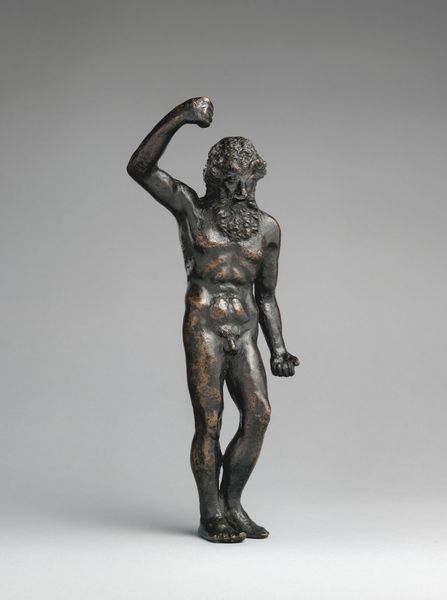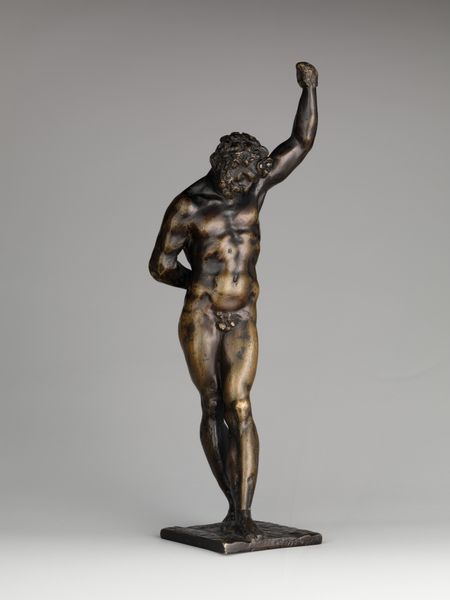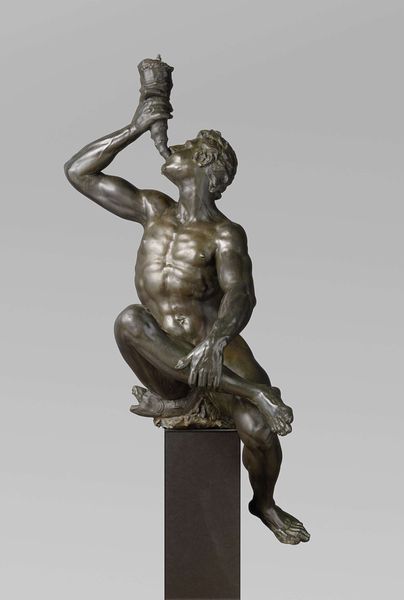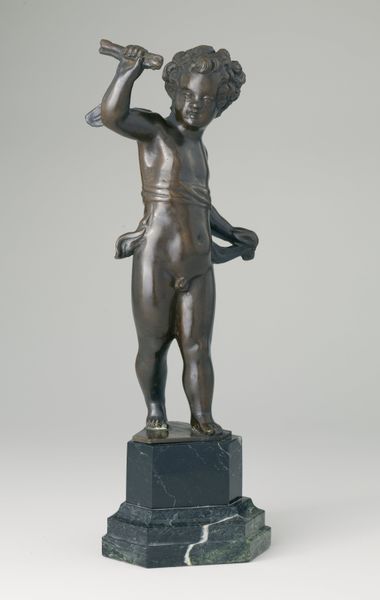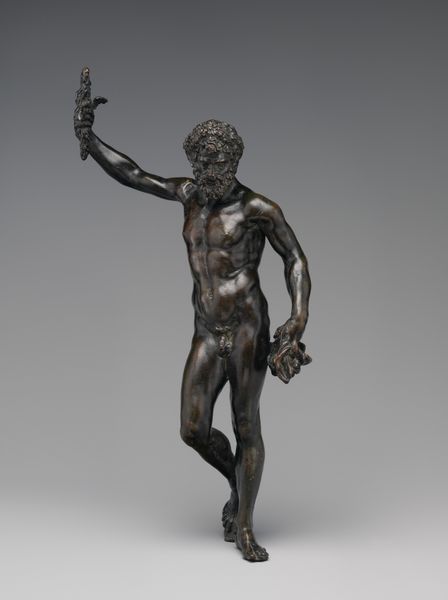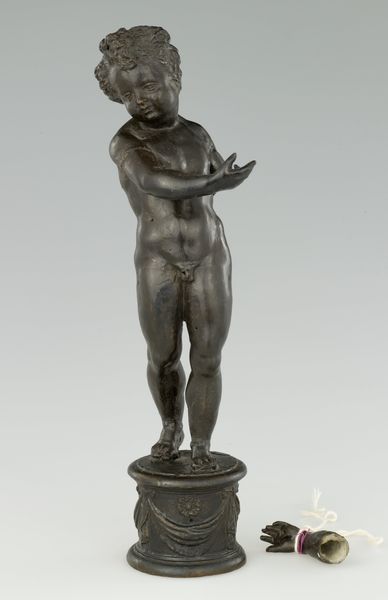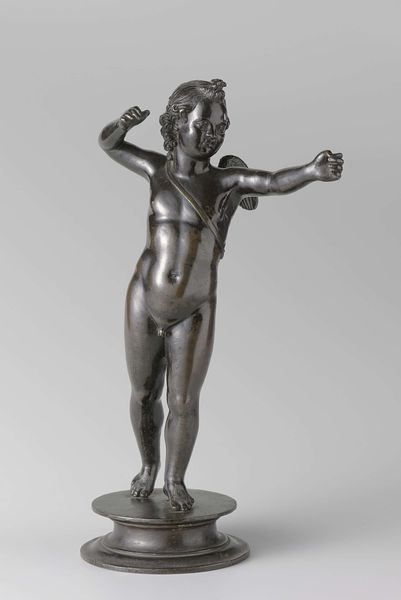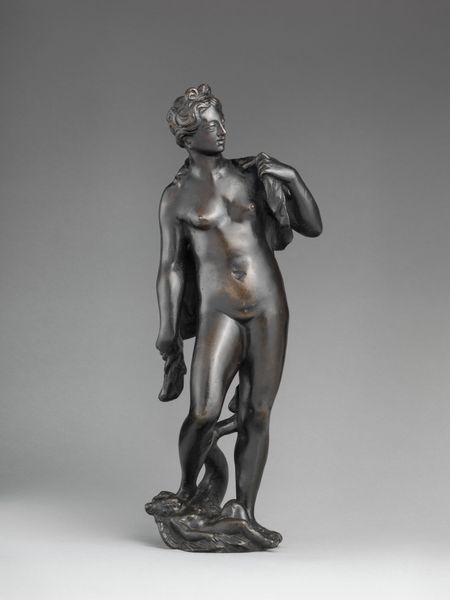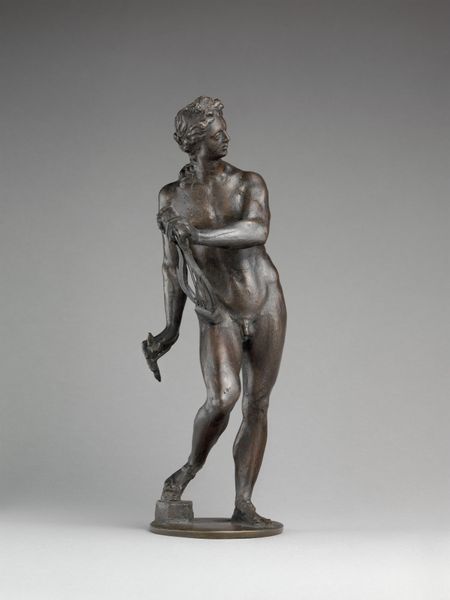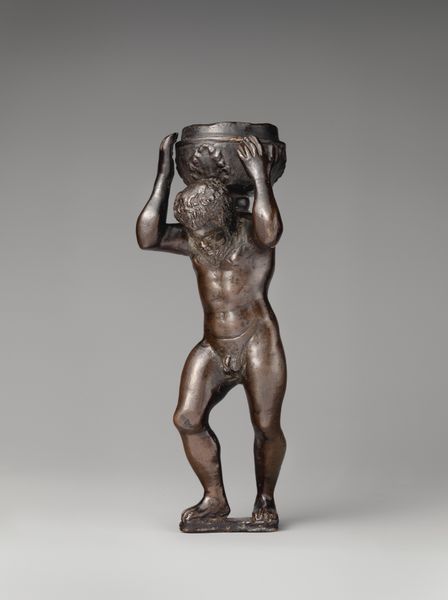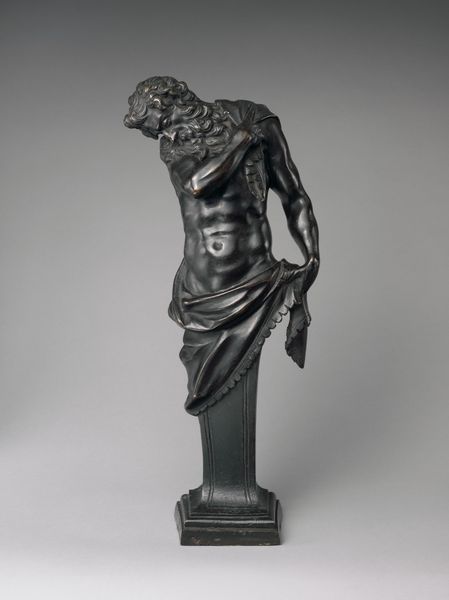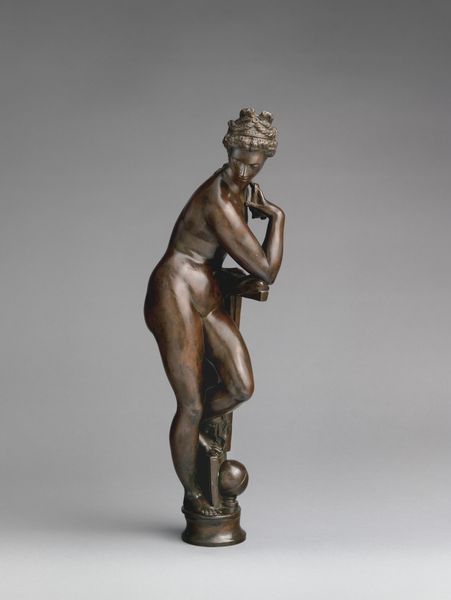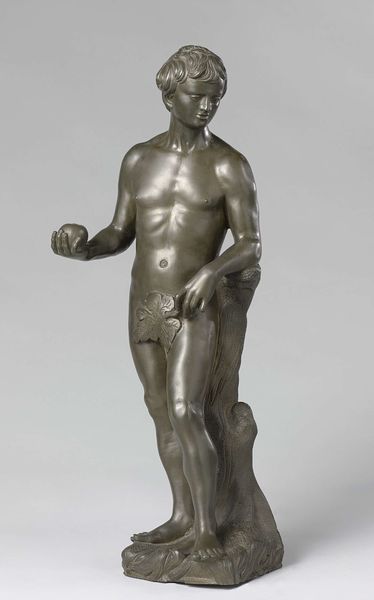
bronze, sculpture
#
sculpture
#
classical-realism
#
bronze
#
figuration
#
11_renaissance
#
sculpture
#
history-painting
#
decorative-art
#
nude
Dimensions: Overall: 14 1/8 × 3 7/8 × 4 3/8 in. (35.9 × 9.8 × 11.1 cm)
Copyright: Public Domain
Curator: Looking at this bronze statuette, attributed to Niccolò Roccatagliata and made sometime between 1600 and 1899, I'm struck by the depiction of Hercules and what it represents within broader narratives of power and masculinity. Editor: My first impression is the reflective sheen of the bronze, which creates an appealing surface. He seems almost pensive, far from the typically triumphant depictions we see of Hercules. What does his club represent here; a tool, weapon, or burden? Curator: Indeed. Representations of Hercules, especially during the Renaissance, served to align rulers with his virtues and heroic achievements, reflecting contemporary socio-political aspirations regarding gender and governance. We often view the mythologized feats of Hercules, which symbolize triumph, bravery, and power. Here we seem to glimpse more; perhaps weariness, as well? Editor: Absolutely, I'm fascinated by the labor required to produce such a detailed piece in bronze. The casting process itself, the choice of material. It’s compelling to think of how this small figure, through its very physicality, carries cultural and historical weight far beyond its modest size. Curator: And what weight he carries! Consider the ways in which these sculptures reinforced idealized images of masculine strength and leadership, particularly for the upper classes. Hercules and the myths around him served as cultural instruction regarding gender roles in that particular historical context, something that still echoes today. Editor: Thinking of its making, though: Did Roccatagliata have to source materials and work with various foundries, craftspeople, and other potential figures involved in the object's fabrication? Bronze wasn't exactly an easy, single-person task. It reflects this convergence of materials and expertise that ultimately shaped our engagement with these narratives. Curator: This highlights a complex intersection: the physical and the representational, with both influencing broader cultural attitudes about everything from acceptable masculinity to displays of social prowess and material culture. By interrogating such associations, we can see this bronze depiction as more than just an aesthetic statement, revealing layered meanings. Editor: Precisely, reflecting on how a crafted bronze statuette is both the culmination of multiple layers of work while representing far more than just physical exertion provides interesting and diverse avenues to consider.
Comments
No comments
Be the first to comment and join the conversation on the ultimate creative platform.
